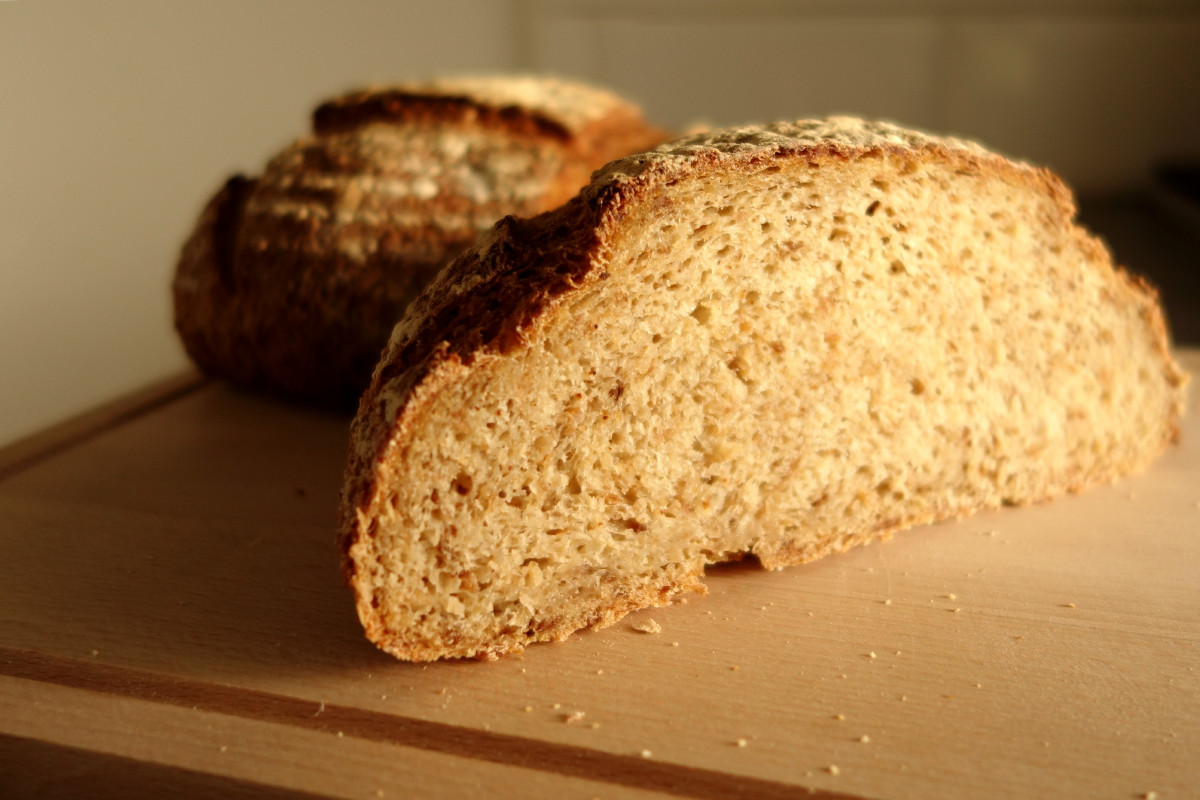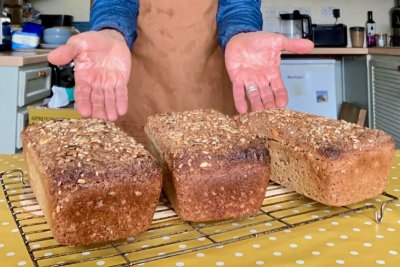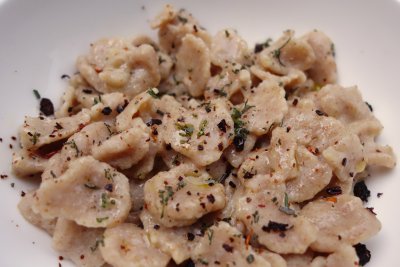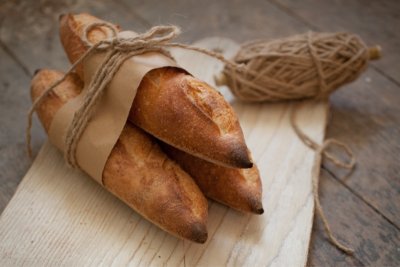Sustain / Real Bread Campaign / Recipes
Breadcrumb bread
Baking your way round flour shortage and food waste.
Using leftovers doesn’t solve the enormous global problem of food waste but it’s a start. As this recipe uses half the usual amount of flour, and a tiny amount of yeast, it’s handy if you’re running low.
This recipe was published in April 2020 as part of the Real Bread Campaign's #LockdownLoafers initiative.
Read the Real Bread Campaign's No Loaf Lost guidance on minimising bread surplus and waste.
Ingredients
Makes one medium (about 650g) loaf
The sponge
60g Strong/bread, or plain, flour (white, brown or wholemeal)
60g Water
3g Fresh (or 1g / ¼tsp fast acting) yeast*
The dough
200g Stale / leftover bread (heel, crown, crusts, whatever)
200g Strong/bread, or plain, flour (white, brown or wholemeal)
220-250g Water straight from the tap
120g Sponge (ie all of the above)
6g Salt (about one level 5ml teaspoon)
*Read the label and avoid those that contain any additives.
Method
Make the sponge by combining the three ingredients in a bowl, covering and leaving for about 10-12 hours (eg overnight) at room temperature, until bubbling. Alternatively, leave out the sponge stage and make a straight dough with about 5g of fresh (or 2-3g / 1tsp instant) yeast instead - see below.
Cut or tear the stale bread into chunks, then blitz into crumbs using a blender or food processor.
Weigh the water in a bowl and stir in the salt until dissolved, then mix in the sponge, breadcrumbs, flour and (if you've gone for the straight fdough version) yeast. There’s no need to knead – you can stop once you have a shaggy dough but there’s no dry flour left.
Cover the bowl (eg with a carrier bag that you can reuse again and again) and leave to rest for half an hour or so.
Scoop the dough out of the bowl with a wetted dough scraper, or your hand, stretch it and fold it in half, then repeat this action. You can find videos demonstrating how on t’internet. Place the dough back in the bowl and cover again.
Leave at room temperature to prove/rise. Depending on what temperature your room is (mine was about 20-21°C when I did tests of this bread) this might be six to eight hours. During this time, repeat the stretch’n’fold action every now and then. You could do it hourly or every other hour, but doesn’t have to be that often.
Shape the dough however you like eg for an oiled tin, banneton, or free-standing on an oiled baking tray. Again, the intermesh is full of how-to videos. Cover and leave for two or three hours until it’s fully risen.
Heat the oven (with a baking stone or tray in place if you’re proving dough in a banneton) to about 250°C.
Turn out the dough if proved in a banneton, dust the top with flour, if you like, and/or slash it with a lame/grignette or murderously sharp knife and put straight into the oven.
Bake a large loaf for about 45-60 minutes, turning the heat down to about 220°C.after the first 15 minutes. Turn out onto a wire rack and leave to cool before slicing – bread can be gummy and lose a lot of moisture if you cut when hot.
Substitutions
In answer any ‘can I…’ questions about swapping or adding ingredients, adjusting times and temperature, the answer is yes, you can. Every tweak creates a different recipe that will give you different results. Seek out those recipes or experiment for yourself and, if you come up with a bread you love, please share it and your tips!
Recipe © Chris Young / www.realbreadcampaign.org
Reproduction prohibited without written permission of the copyright holder.
Social sharing
If you make this, please share your photo(s) with the world on social media using #RealBread and other relevant hashtags, linking back to this recipe. Better still if we can see you in the photo, too: #WeAreRealBread!
Please don't forget to tag us, and the recipe's author. You can find us on:
- Twitter: @RealBread
- Instagram: @RealBreadCampaign
- Facebook: @RealBreadCampaign
Published Sunday 19 April 2020
Real Bread Campaign: The Real Bread Campaign finds and shares ways to make bread better for us, better for our communities and better for the planet. Whether your interest is local food, community-focussed small enterprises, honest labelling, therapeutic baking, or simply tasty toast, everyone is invited to become a Campaign supporter.





